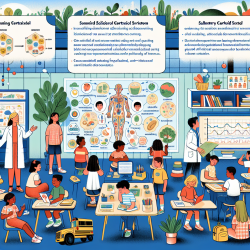As practitioners dedicated to improving the lives of children with disabilities, it's essential to stay informed about the latest research and data-driven insights. One such significant study is "Participation of Children with Disabilities in Taiwan: The Gap between Independence and Frequency." This research offers valuable findings that can help us enhance our therapeutic approaches and ultimately improve outcomes for the children we serve.
The study investigates the gap between what children with disabilities can do (independence) and what they actually do (frequency) in various settings, including home, school, and community. The findings reveal that these gaps vary significantly based on the severity of impairment, age, and the environment in which the children participate.
Key Findings and Implications
- Negative Gaps in Mild to Moderate Impairments: The study found that children with mild to moderate impairments often have more restrictions on frequency than on independence, especially in community settings. This suggests that while these children have the capability to participate, they lack the opportunities or support to do so.
- Positive Gaps in Severe to Profound Impairments: Conversely, children with severe to profound impairments often experience more restrictions on independence than on frequency, particularly in home and school settings. This indicates that these children receive more support in these environments, allowing them to participate more frequently than their abilities alone would permit.
- Age-Related Trends: The gaps between independence and frequency widen with age, particularly for children with mild impairments. This highlights the increasing need for environmental support as children grow older and face more complex social and physical environments.
Practical Applications for Practitioners
Based on these findings, practitioners can take several actionable steps to enhance participation for children with disabilities:
- Focus on Community Integration: For children with mild to moderate impairments, it's crucial to create more opportunities for community participation. This can involve collaborating with community organizations to develop inclusive programs and activities.
- Tailor Support Based on Severity: Recognize that children with severe to profound impairments may require different types of support compared to those with mild impairments. Ensure that interventions are tailored to meet the specific needs of each child, considering both their capabilities and the support available in different settings.
- Monitor Age-Related Changes: Be aware of the changing needs of children as they grow older. Regularly assess both their capabilities and participation opportunities, and adjust interventions accordingly to ensure they continue to engage in meaningful activities.
Encouraging Further Research
While this study provides valuable insights, it also highlights the need for ongoing research to better understand the factors that influence participation for children with disabilities. Practitioners are encouraged to stay engaged with the latest research and consider participating in studies that explore new ways to support these children.
To read the original research paper, please follow this link: Participation of Children with Disabilities in Taiwan: The Gap between Independence and Frequency.










